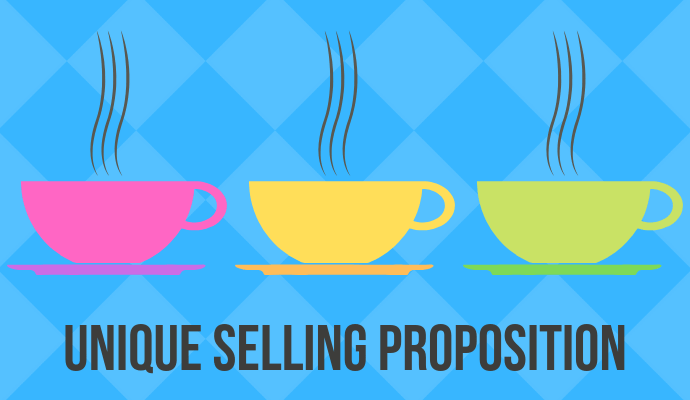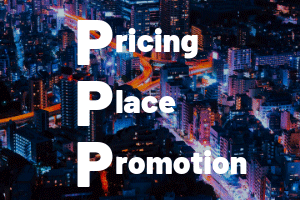Executional frameworks serve as the backbone for organizations aiming to translate their visionary strategies into tangible results. They bridge the often-elusive gap between visionary planning and ground-level action, ensuring that ideas don't merely stay on paper but transform into measurable outcomes.
Understanding the Need for Executional Frameworks

In the business world, countless strategies are conceived daily. Yet, a significant number of these strategies falter before they see the light of day. Why? A lack of robust execution. There's a clear gap between formulating a plan and executing that plan to fruition.
One might have the most groundbreaking strategy, but without a systematic approach to bring that strategy to life, the strategy remains dormant. The complexity of managing multiple tasks, stakeholders, and processes can overwhelm teams, leading to missed targets, diluted focus, and lost opportunities.
This is where executional frameworks come into the picture. They provide a structured approach to action, breaking down broad goals into manageable tasks, ensuring alignment across the organization, and setting up monitoring mechanisms to gauge progress.
Did You Know?
- Agile Project Management: Agile projects are reportedly 28% more successful than traditional projects.
- Lean Six Sigma: Companies that implement Lean Six Sigma often see a 20% improvement in team efficiency.
- Scrum Methodology: Over 70% of Agile teams use Scrum or Scrum hybrid.
- OKRs (Objectives and Key Results): Companies using OKRs have reported up to a 56% improvement in performance.
- Balanced Scorecard: About 60% of Fortune 1000 companies use the Balanced Scorecard approach.
Popular Executional Frameworks
Several executional frameworks have gained prominence over the years, each offering unique perspectives and tools for organizations.
Balanced Scorecard
Originating from the early 1990s, the Balanced Scorecard offers a holistic view of an organization's performance. Instead of solely focusing on financial outcomes, this framework evaluates performance from four angles: Financial, Customer, Internal Processes, and Learning & Growth.
These perspectives ensure a comprehensive view of organizational health, encouraging long-term growth and sustainability. For implementation, organizations set specific metrics for each perspective, regularly reviewing progress and adjusting as necessary.
Objectives and Key Results (OKRs)
A favorite among many contemporary organizations, OKRs break down objectives into quantifiable results. The beauty of this framework lies in its simplicity.
An objective defines what one wants to achieve, while key results indicate how one will achieve that objective, often through specific metrics. OKRs promote transparency, alignment, and focus, as everyone in the organization is aware of the overarching goals and their role in reaching them.
Agile Execution Frameworks
Borrowed from software development, Agile frameworks prioritize adaptability and customer feedback. Unlike traditional methods that focus on extensive planning followed by execution, Agile promotes iterative progress, adaptability, and direct collaboration.
Scrum and Kanban are popular methodologies under the Agile umbrella. Scrum breaks work into time-boxed iterations called "sprints," while Kanban focuses on visualizing work and improving flow. These methodologies allow for quick adjustments based on real-time feedback, ensuring that the final product or strategy remains relevant and value-driven.
The choice of an executional framework largely depends on the organization's goals, culture, and nature of projects. However, regardless of the chosen framework, the aim remains consistent: to transform ideas into actions and actions into measurable results.
Did You Know?
- Kanban: Teams using Kanban report a 50% reduction in time to complete projects.
- Waterfall Model: Only about 10% of companies primarily use the Waterfall model in software development.
- PRINCE2 (Projects IN Controlled Environments): Over a million professionals worldwide are certified in PRINCE2.
- Critical Path Method: Projects using CPM often see a 20% reduction in delays.
- Total Quality Management (TQM): Companies implementing TQM experience an average revenue increase of 48% within 5 years.
Unique Selling Proposition
A unique selling proposition also known as unique selling point is the factor that differentiates a given product from its competitors. This could include lowest cost, or the highest quality possible, or even the first ever product of its kind (Rob, 2010). In simple terms it can be said to be what you have that competitors do not have as of yet. The main aim is to make sure that the company gains a competitive advantage against the rest in the competing enlivenment.

Unique Identification
For instance when considering Starbucks, we can come to a conclusion that it has its unique identification as it stands out to be the best when it comes to coffee production. It is not only through production but also the packaging and marketing efforts that the company associates itself with. The idea of premium coffee is what has helped the company to be able to beat competition even from gas stations, and other beverage shops, and this has made it possible for it to attract and retain as many customers as possible. The thing that has enabled the company stand out is to find strategies that can work for its USP and ensure that it is doing well in the competing marketing environment.
Development of USPs
All companies have their unique way of developing their USPs but the most important thing is to make sure that it is unique from the other companies in the business environment. There should be some features that stand out in enabling the company have a level of its own in this marketing environment (Kotler, 1997). One of the best exceptional frameworks of USP includes having a unique kind of product. Customers and consumers would like to have something that they have never seen before. This is what would draw them to a company because they are pretty sure that they will have a unique experience from that which they have had with other products.
Pricing

Apart from the product uniqueness, another framework could be to work on the price of the product. It does not need to be necessarily low, but it is important to ensure that it is kept competitive (Hiam & Schewe, 2002). It should also be one that should give the consumers value for their money. Additional services could also be included to make the product and accompanying price to stand put, and despite the fact that it might be high, it could still attract customers because of the value that it gives to customers.
Place
It is also important to consider the place where the product is intended to be introduced. Very many things play a very big role when it comes to this. For instance, it is important to make sure that the lifestyles of the people match the product that is being introduced. They should be able to afford the price that is set up for the product, for the product to be bought in large numbers. It is also important to ensure that the product is relevant to these people. If it is irrelevant, then most probably they won’t buy it.
Did You Know?
- Project Management Office (PMO): Organizations with a PMO report 38% more projects meeting original goals and business intent.
- SAFe (Scaled Agile Framework): 29% of organizations using SAFe reported a reduction in defects by 50% or more.
- Theory of Constraints: Businesses applying this often see a 20-50% increase in performance measures.
- Design Thinking: Companies integrating design thinking into their process have seen a 56% increase in innovation ROI.
- ITIL (Information Technology Infrastructure Library): ITIL adoption can lead to a 10-25% cost savings in IT operations.
Promotion
Lastly the company should make sure that it has carried massive promotion strategies to enable as many people as possible know about the product in question. Knowledge of the product is something that will also play a big role in boosting the sales of the product. Promotion could be in many forms which include advertising, sells promotion, discounts among others. The main aim is to arrest the attention of the buyers and make sure that they are aware of the new product or services in the market. Companies should at all times struggle to improve on their products or services to make them more satisfying to customers. This is also factor that can help the companies avoid any competition from the competing organizations.
Elements of Successful Execution

Clear communication stands at the forefront of successful execution. Without open channels that foster dialogue and ensure everyone remains on the same page, even the most robust plans can falter. It acts as a bridge, connecting different departments, roles, and hierarchies, ensuring a seamless flow of information and feedback.
Employee engagement, a cornerstone of any thriving organization, directly correlates with successful strategy execution. When employees feel a sense of ownership and understand their role within the larger organizational picture, they are more inclined to commit and contribute their best efforts. This commitment ensures that every task, no matter how minute, aligns with the overarching goal.
Regular monitoring facilitates the timely identification of setbacks, allowing for prompt corrective action. Without consistent oversight, minor issues can escalate, diverting resources and time. Thus, having feedback mechanisms not only aids in keeping strategies on track but also fosters an environment of continuous improvement.
Lastly, the ability to adapt is paramount. In an ever-evolving business landscape, rigidity can be detrimental. While executional frameworks provide a structure, they should not be so rigid as to stifle innovation or deter necessary change. Continuous learning and the willingness to pivot when needed can spell the difference between success and stagnation.
Factors to Consider when Choosing an Executional Framework
Every organization has a unique DNA - a combination of its history, culture, resources, and goals. This uniqueness necessitates careful consideration when selecting an executional framework.
Organizational culture and structure often dictate how strategies are perceived and implemented. A hierarchical organization might prefer a top-down approach, while a flatter structure might lean towards collaborative frameworks that allow for greater employee participation.
The nature of the project or strategy also plays a pivotal role. Short-term projects might benefit from agile methodologies that allow for rapid adjustments, while long-term strategies might fare better with frameworks that emphasize comprehensive planning and regular reviews.
Resource availability, both in terms of manpower and financial capacity, can influence the choice of framework. Some frameworks demand extensive training or sophisticated software tools, making them unsuitable for organizations with limited resources.
Lastly, time horizons can sway the decision. If rapid results are the primary objective, frameworks that prioritize swift action and iterations might be more suitable than those emphasizing extensive deliberation.
Did You Know?
- Six Sigma: Motorola, the originator of Six Sigma, saved an estimated $17 billion from 1986 to 2006.
- Value Stream Mapping: On average, businesses see a 20% increase in process efficiency after implementing Value Stream Mapping.
- Scrum of Scrums: Teams using this framework often report a 30% increase in delivery speeds.
- Kaizen: Implementation of continuous improvement (Kaizen) can lead to a 25-30% increase in operational efficiency.
- Change Management Models (like Kotter’s 8-Step Process): Effective change management can increase project success rates by up to 30%.
Challenges in Implementation
Even the most fitting executional framework can encounter resistance and challenges during the implementation phase.
Change, even when positive, often meets resistance. Employees accustomed to certain ways of working might view new frameworks with skepticism, fearing added workloads or possible redundancy. This resistance can hinder the adoption rate, slowing down the execution process.
A lack of understanding or buy-in can prove detrimental. If the purpose and benefits of the new framework are not communicated clearly, employees might fail to see its value, leading to half-hearted participation.
Resource constraints often pose significant hurdles. While the framework might be ideal in theory, the lack of necessary tools, training, or personnel can impede its practical application.
Lastly, an overemphasis on processes can overshadow actual outcomes. While frameworks provide structure, they are a means to an end, not the end in itself. Losing sight of the ultimate goals and becoming too entangled in processes can dilute the strategy's potency.
References
Hiam, A., & Schewe, C. (2002). The Portable MBA in Marketing. New York: John Wiley & Sons.
Kotler, P. (1997). Marketing Management: Analysis, Planning, Implementation and Control. New Jersey: Prentice Hall, Inc.
Rob, D. (2010). Principles and Practice of Social Marketing: An International Perspective. London: Cambridge University Press.

AshemaKevin is a Freelance writer. He covers all topics revolving around business. You can follow him on X @ashemakevin
Author // Kevin Ashema
